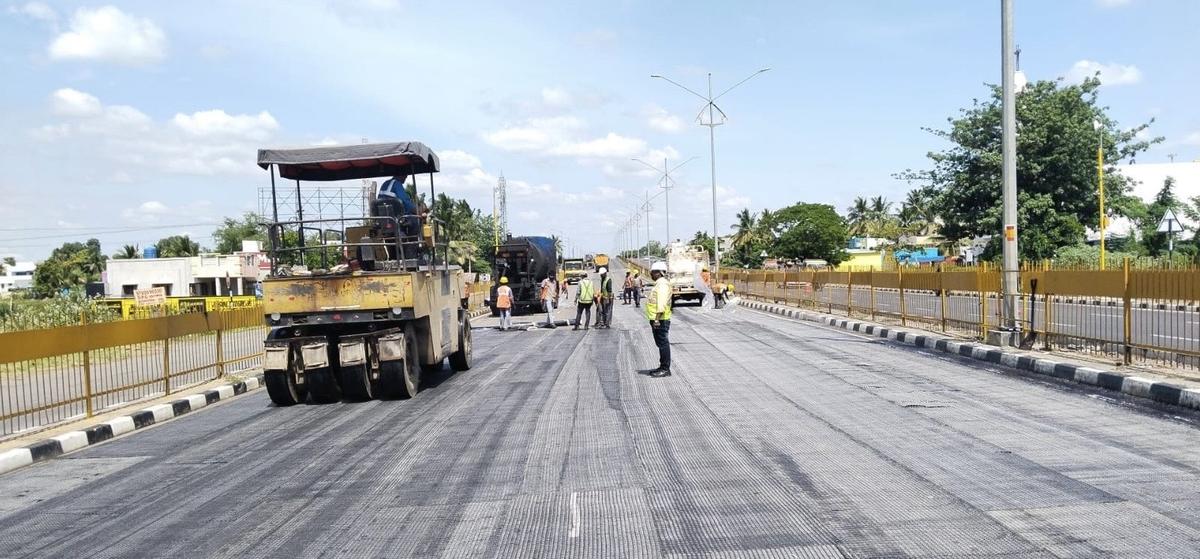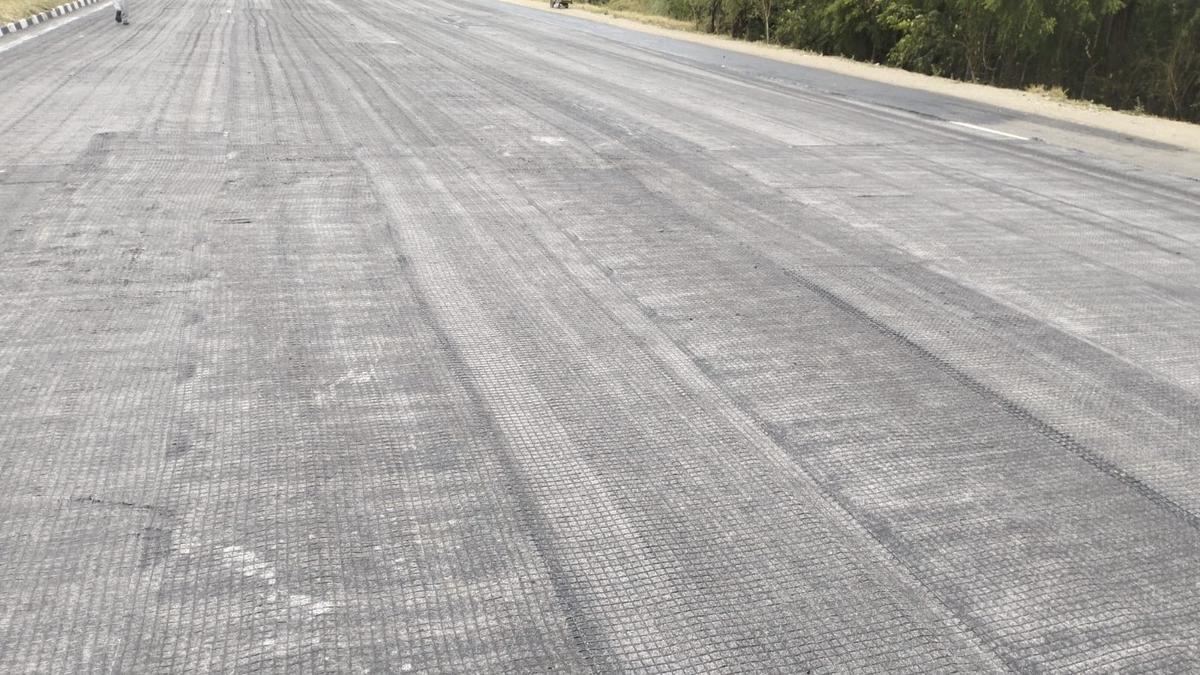
A roll of glass beads is laid on identified cracked portions of the highway like plaster.
| Photo Credit: Special Arrangement
The National Highways Authority of India (NHAI) has commenced a trial using glass beads layer on identified cracks on the carriageway of Chennai – Bengaluru Highway (NH-44) between Walajah toll gate in Ranipet and Krishnagiri to ensure durability of the stretch and to prevent accidents on the route.
NHAI officials said that, at present, the highway between Krishnagiri and Walajapet (Ranipet district), a distance of 148 km, is maintained by Larsen &Toubro on behalf of NHAI on a 30-year agreement, signed over a decade ago, for maintenance.
As per norms, the complete makeover of the entire stretch should be done only once every decade. Regular maintenance, including patchwork, should be done every six months on the stretch. “The trial of using glass beads layer is taken up as the complete re-lay of the entire stretch between Walajah and Krishnagiri has been done. Performance of the new glass beads layer will be observed for 1-2 years before adapting it to other key stretches,” a NHAI official told The Hindu.

Referred to as “Glass Grid Rapid” technology, technically designed by IIT-M for NHAI, the glass bead roll is a lengthy layer that contains small particles of glass beads. Each glass bead layer measures one metre wide and 0.25 mm in height. The roll of glass beads is laid on identified cracked portions of the carriageway like plaster. On top of it, a fresh coat of bitumen, with a depth of 40 mm, is laid.
As part of the trial, two spots, such as Eraivankadu village in Vellore and Kannigapuram village near Ambur in Tirupattur on the stretch, have been taken up for the glass bead layer work. At Eraivankadu, 1.2 km has been laid with a glass bead layer, whereas two km of the stretch in Kannigapuram has the new layer. The work is nearing completion.

Performance of the new glass beads layer will be observed for 1-2 years before adapting it to other key stretches.
| Photo Credit:
Special Arrangement
NHAI officials said that the glass bead layer sticks between two layers of the bitumen on the carriage as a glue. Thus, it helps to prevent any cracks on the surface of the bitumen carriageway. Such prevention of cracks helps to avoid the creation of potholes during monsoon, resulting in waterlogging and accidents. On the other hand, glass bead technology ensures longer shelf life of bitumen stretches on key routes.
At present, NHAI officials said that identified cracks on key routes were filled after complete milling of bitumen on the carriageway. It results in huge costs for the State’s exchequer and is time-consuming as it needs a large number of labour to remove milled bitumen from the stretch.
Currently, NHAI has completely relaid the bitumen of the carriageway to a height of 40mm, replaced damaged steel median, road markings, including pedestrian crossings, and also removed bushes in the space around the median.
To ensure the safety of motorists, NHAI is currently increasing the total height of retaining walls on the elevated corridors from two feet to five feet. Each elevated corridor, on an average, is around 800 metres long and 15 metres wide. The stretch has around 50 such corridors including railway level crossings on the route.
Published – July 19, 2025 11:52 pm IST


















